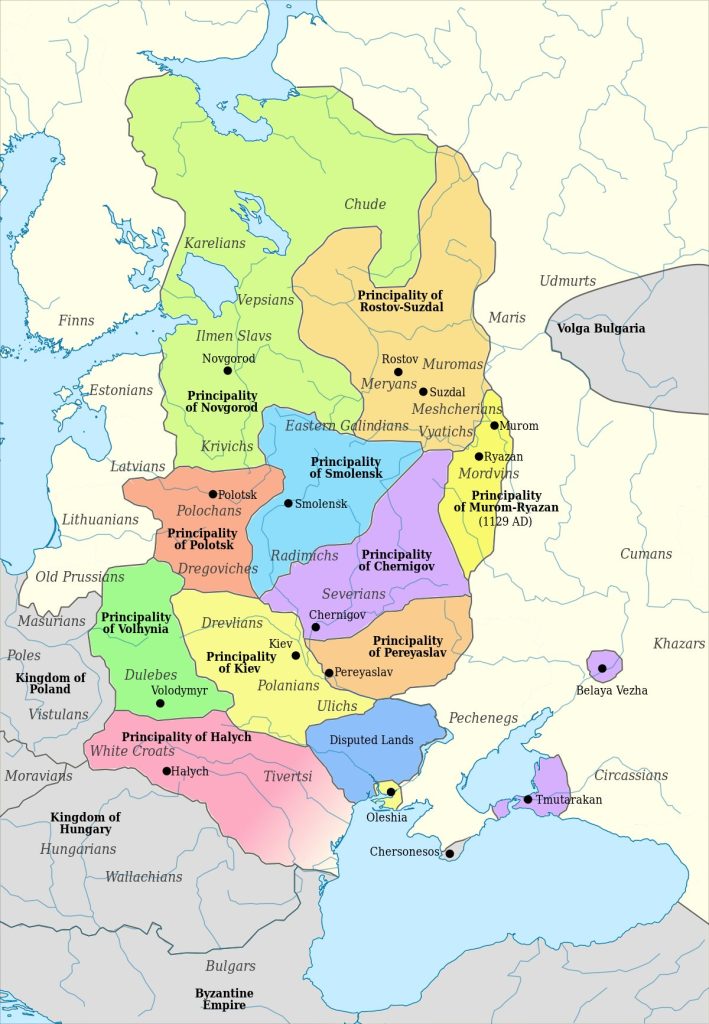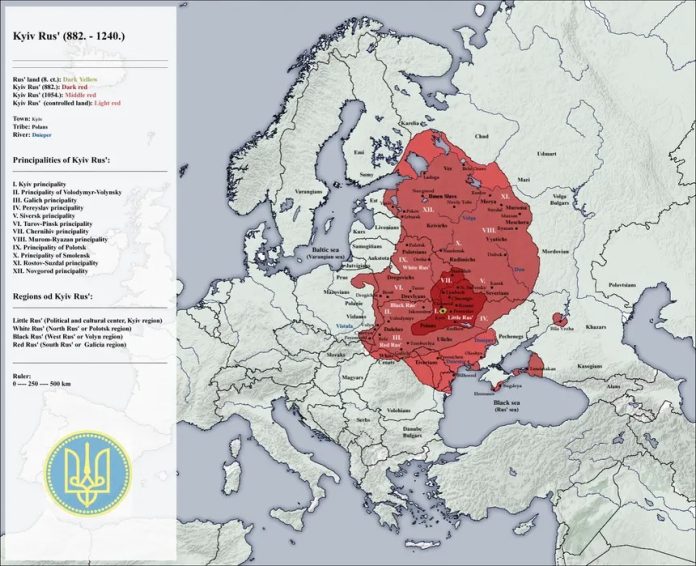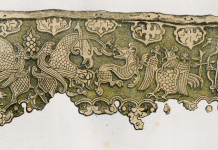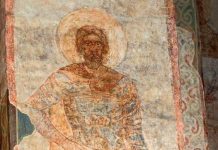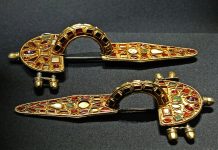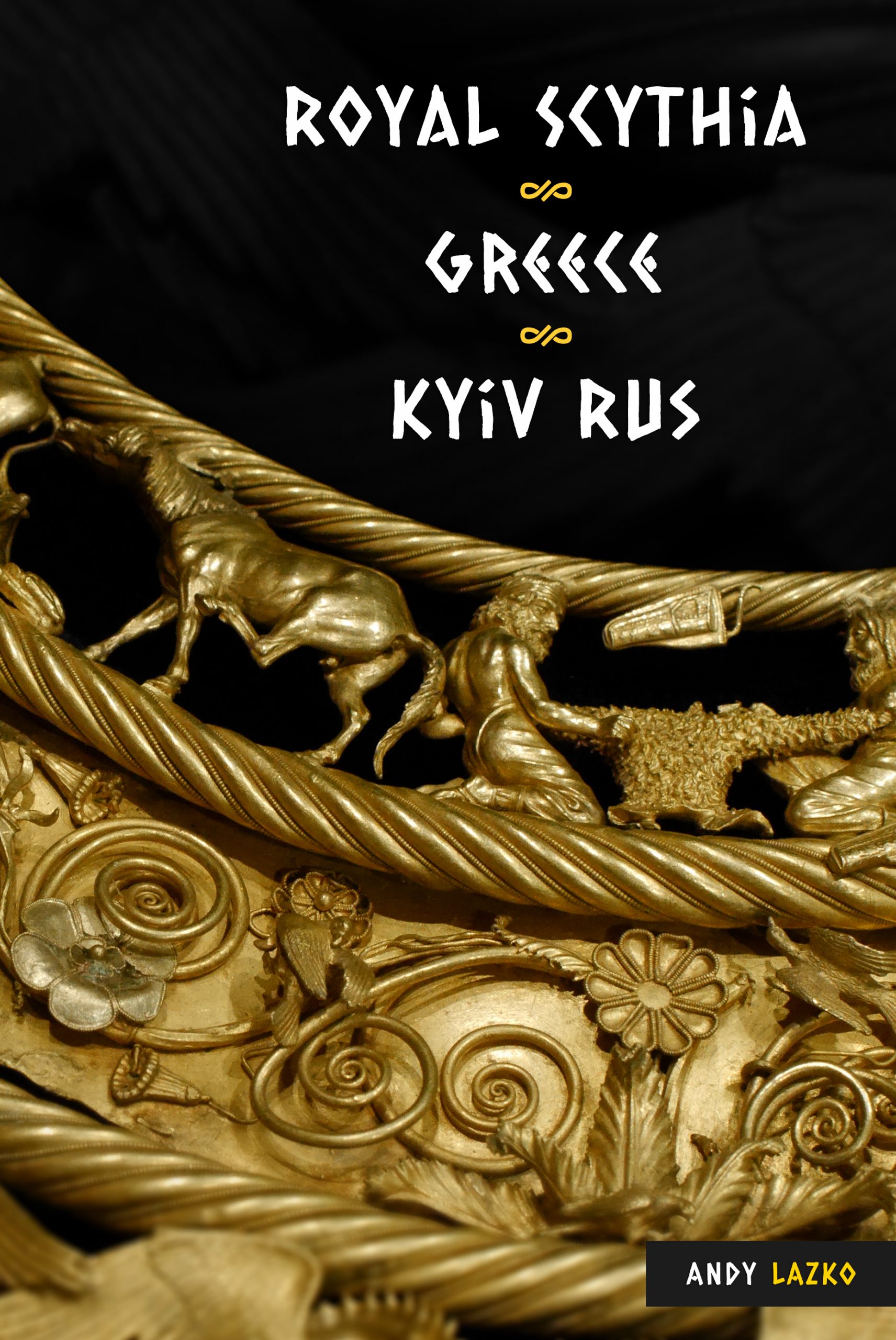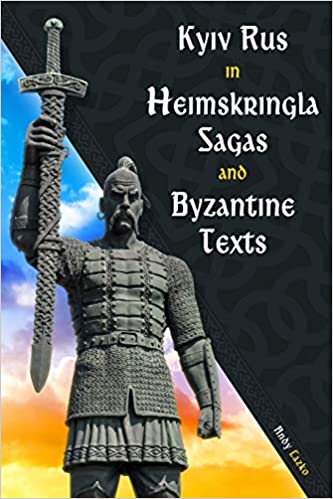Per Wikipedia, Anti-Normanism theory postulates that the people of Kyiv Rus emerged solely from autochthonous Slavic political development (known as the ‘anti-Normanist theory’).
Surprisingly, among the proponents of the Anti-Normanism, the page does not mention Ukrainian Professor Mykhailo Maksymovych (1804 – 1873) and mentions only the names of two most well-known historians – N. Kostomarov (1817 – 1885), and Dmitry Ilovaysky (1832 – 1920). We will take a closer look at the work of the latter one.
D. Ilovaysky published his book Research on the Beginning of Rus in 1876, with several more editions up until 1890. It was republished in 2002, with the following annotation:
“A fundamental work on the ancient history of the Slavs by the outstanding historian Dmitry Ivanovich Ilovaisky (1832-1920). Nothing comparable in terms of the scope of the primary source material and evidence has been created by Soviet and Russian or foreign historians in the past 100 years.”
So, what arguments did the author use to defend his beliefs?
“The very fact that doubts about the truth of the Scandinavian theory and objections to it have never ceased in our midst indicates its insufficient persuasiveness, the presence of strains and contradictions in it, its artificial construction. And indeed, the deeper you delve into this question, the more and more the strains become apparent…
Let us begin with this: is there the slightest probability that a people, and not just one people, but several, and not even one tribe, would conspire at once and call upon another people to rule over them, that is, voluntarily impose upon themselves an alien yoke? There are no such examples in history, and they are inconceivable. And that in this case, we are talking not only about princes and their retinue, but about the whole people, there can hardly be any doubt about this.
Despite all the brevity and fragmentary nature of the Byzantine news about Igor’s campaign, we can, however, guess that it was not a simple raid just for the sake of booty, as we usually depict it; no, it was a whole and rather long war. The Russians landed in Asia Minor and fought there for several months…
Pay attention to those places in the treaties of Oleg and Igor where they speak of the fair-haired Rusian princes who were under the hand of the Kyiv prince; in Igor’s Treaty, many names of these (appanage) princes are also given; each of them, of course, had his own retinue.
Pay attention also to the main articles of these treaties. Do they not indicate the existence of already significant and active trade relations, and not only trade, but also ambassadorial?
The treaties are conducted exclusively on behalf of Rus‘, as a strong people, long settled in their places and quite clearly defining their relations with their neighbors.
This Rus’ produces a significant number of merchants who undertake long voyages and live for long periods in foreign countries.
These Rusian merchant-warriors who traded in Constantinople were so numerous that, for security reasons, it was stipulated that they should not enter the city at a time more than 50 people, and without weapons.
The same treaties speak not only of traders and ambassadors, but also mention the Rus, who served as mercenaries in the troops of the Byzantine emperors (Byzantine historians also speak of the Rus mercenary troops).
Everything proves that the Rus… was not some separate squad or some clan that came with its princes, called to the Novgorod land to establish order. No, it was a whole strong people, distinguished by an enterprising, severe and power-hungry character. Byzantine news strongly complains about its ferocity. Not only the neighbors suffered from this people; its rule was not easy for the subject tribes either…
Since it follows from the chronicle itself that this was a strong people, who in a short time conquered so many tribes and founded a huge state; therefore, they must have made their movement from Scandinavia in large masses and carried out an invasion like, for example, the Ostrogoths or the Lombards, who conquered Italy. But could such a movement have gone unnoticed by contemporaries and not found any echo in Scandinavian, German or Byzantine sources? Consequently, there was no such movement.
And it could not have been on such a scale. The Scandinavian country nearest to Rus, Sweden, was itself still very poorly populated at that time; its Germanic element was still very sparsely populated. The most powerful Norman people, the Danes, had just declared themselves by sea raids at that time; but their aspirations were directed towards the shores of Western Europe; their main efforts, as is well known, were directed towards England. The same can be said about the Norwegians as about the Swedes and Danes together, that is, they were as few in number as the Swedes, and were just as eager to move west as the Danes.
If Oleg was a Norman who came to Rus with Rurik, and his squad consisted of Normans, then how is it, according to the evidence of the treaty, that they swear by the Slavic deities Perun and Volos, and not the Scandinavian Odin and Thor?
The same oath is repeated in the treaties of Igor and Svyatoslav. We have seen that Rus’, by all indisputable signs, was a strong, numerous people and a ruling people. If it were a people who came from Scandinavia, how could it change its religion so quickly and who could force it to do so?
Even if we accept the position that it was not a people (which is completely incredible), but a Scandinavian dynasty with its retinue, which constituted only the upper class, the so-called aristocracy in the country of the Slavs, and evn then there is no probability that the ruling class would so quickly abandon its religion in favor of the religion of its subjects. It is surprising that this inconsistency did not strike the Normanists. However, their opponents paid too little attention to this circumstance.
The treaties of Oleg and Igor convince us that Rus existed on the Dnieper and the Black Sea long before the second half of the 9th century, that is, before the era of the so-called calling of princes. We have already said that these treaties indicate fairly developed and, therefore, long-standing trade relations.
Such relations, and moreover accompanied by formal treaties, could not have been established suddenly, without a whole series of corresponding circumstances. And indeed, the same treaties contain direct hints that they were a repetition of previous, similar peace treaties…
Firstly, Byzantine sources do not mix Rus with the Varangians, but speak of them separately. Secondly, they mention Rus much earlier than the Varangians. Thirdly, as for the hired foreigners in Byzantine service, the Varangians made up the land detachments, while the Rus mainly served in the navy.
We have already noted that Rus, according to Oleg’s treaty, that is, at the beginning of the 10th century, professed, however, the same religion that the Eastern Slavs professed, that is, worshiped Perun and Volos. The same conclusion can be made about the language. If the Slavic text of the treaties belongs to the time of the treaties themselves (and the Normanists do not reject this), then it is clear that Rus already at the beginning of the 10th century used the Slavic-Rusian language and Slavic writing. And if its language and religion were Slavic, then the question is: what Scandinavian did she have left and how did it manage to become Slavic in a few years?”
Yaroslav the Wise’s Skeleton is ‘Undoubtedly of Local Origin’: Facial reconstruction by M. Garasimov >
“Kyiv Rus in Heimskringla Sagas and Byzantine Texts” book offers a solution to the questions D. Ilovaysky left unanswered.
